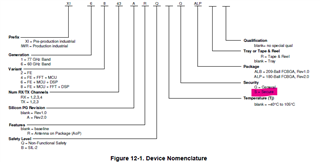Other Parts Discussed in Thread: AWR6843
Hi Team,
This is Chris Park from TIK, and one of my customers got the following questions and I need your insight to answer them.
1. Datasheet says VPP pin is “Voltage supply for fuse chain”. What exactly is EFUSE programming? They need additional 1.7V to supply this pin, and they want to know what function this pin is for.
2. If the customer will not use LVDS, could related power pins be left floating as well ? (including VPP, VIN_18CLK VIOIN_18DIFF)
3. Is OSC_CLKOUT an output pin for clock synchronization with external host?
4, If the customer is not willing to use external MCU or processor, can MCU_CLKOUT pin be left floating?
5. I've been informed that PMIC_CLKOUT is for clock dithering. What is clock dithering? And can this pin connected to PMIC(LP8752J)'s CLKIN pin?
6. According to Data sheet and EVB circuit, NERROR_IN and NERROR_OUT pins are pull up. Should NERROR_OUT be connected to PMIC'S reset pin for resetting AWR6843 since it acts as active low during internal error?
And NERROR_IN receives external error signal, can this also be used to receive Interrupt signals from other ICs? (PMIC nINT signal, CAN IC(TJA1043)'s error signal )
7. During sleep state like Low Power mode, which pin can AWR6843 receive external interrupt signal? Which pin of AWR6843 should they select to receive wake-up external interrupt input?
Thank you.


